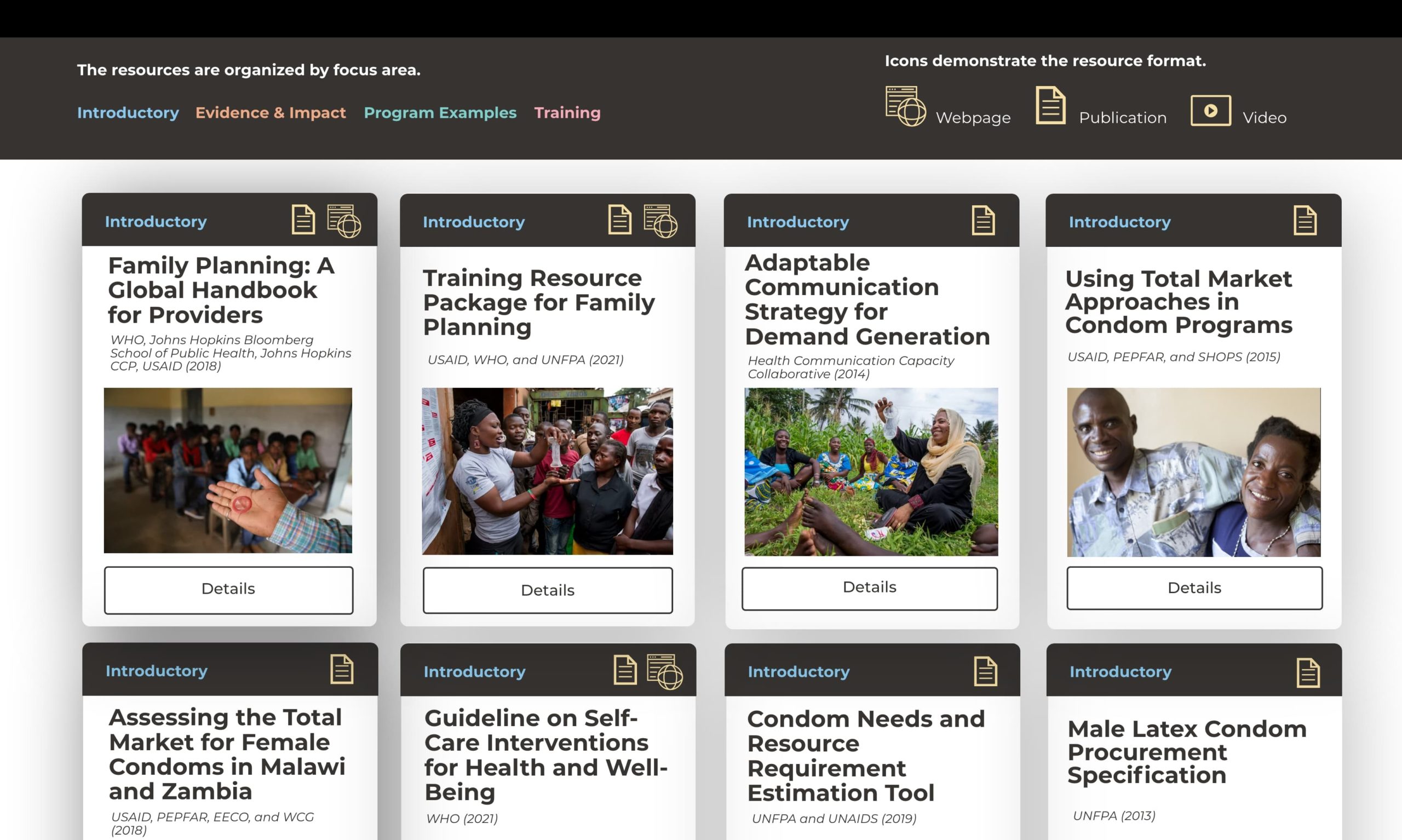Condoms and Family Planning: 20 Essential resources
This article was originally published on Knowledgesuccess.org, by Kirsten Krueger, Reana Thomas, and Hannah Webster.
Why we created a collection on condoms and family planning
As recent-day family planning and reproductive health (FP/RH) efforts place greater emphasis on innovation, it is important to remember the value of evidence-based family planning tools that have been effective for decades. Since the physical properties of condoms have not undergone substantial change, many people may forget the power of condoms as a family planning tool. This collection was created as a reminder to all of us working in family planning that some methods remain relevant even as innovations arise in FP/RH.
Condoms also play an important role as the only method in existence that offers triple protection from unintended pregnancy, sexually transmitted infections, and HIV infection. Among adolescents and youth populations, condoms may be the only affordable method of protection and data show that they continue to be of value to youth. In many regions around the world, youth are the largest proportion of the population, so it is important to invest in methods used by young people.
Finally, humanitarian crises, such as the COVID-19 pandemic, continue to impact supply and distribution of FP/RH commodities and information. The promotion of updated and relevant information on condoms and family planning is necessary now more than ever.

How we chose the resources
This collection began with a series of informational interviews with colleagues knowledgeable about condoms and family planning within FHI 360 and with Bidia Deperthes, Sexual Health Team Lead and HIV Prevention Advisor at UNFPA. The interviews led to several relevant resources and then our team conducted a broader internet scan for any additional resources including those from behavior change and commodities databases and through partners, such as Population Services International (PSI). These resources were reviewed by colleagues at FHI 360, Contraceptive Technology Initiative (CTI), PSI, Male Contraceptive Initiative, and UNFPA. To be included in this collection, a resource must be:
- open-access
- produced within the last five years with the exception of a few seminal pieces
- considered foundational for program managers, technical advisers, decision-makers, or conveners in FP/RH seeking to learn more about various dimensions of condom-related programming and evidence
- global or regional/country-specific with lessons that can be applied in other contexts
What is included in this collection?
This collection includes resources categorised into the following four resource types:
- Introductory Resources (10 resources)
- Evidence & Impact (4 resources)
- Program Examples (4 resources)
- Training (2 resources)
The resources in each type cover topics ranging from condom use, evidence-based condom program management and advocacy, condom market approaches and assessments, procurement standards, to program results within case studies.
Each entry comes with a short summary and statement on why it is essential. We hope you find these resources informative for your work.
To access the resources, please click here for the full list.